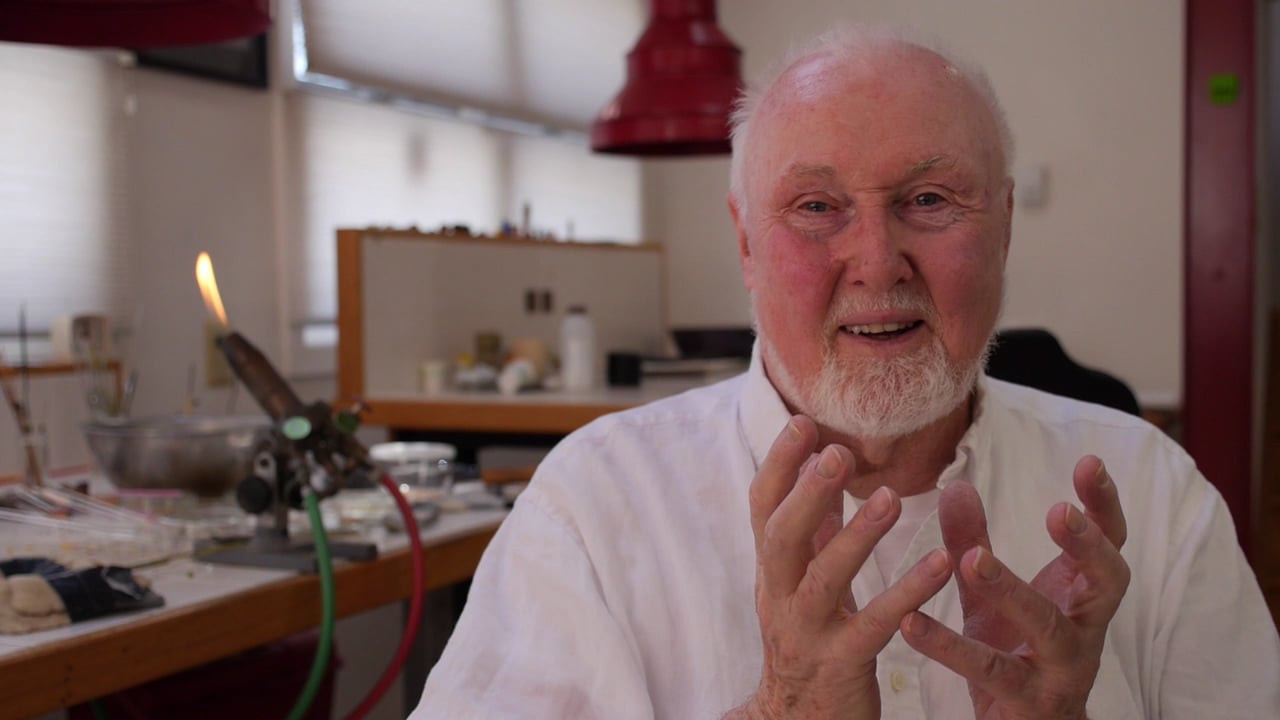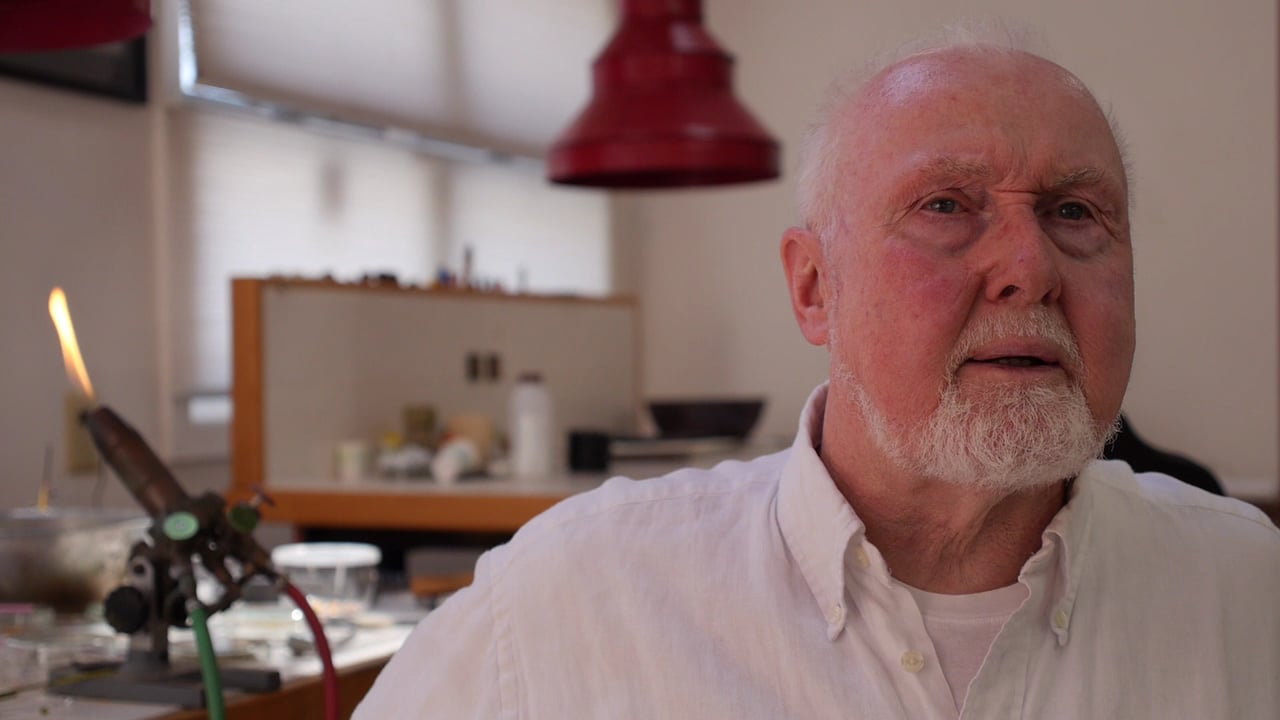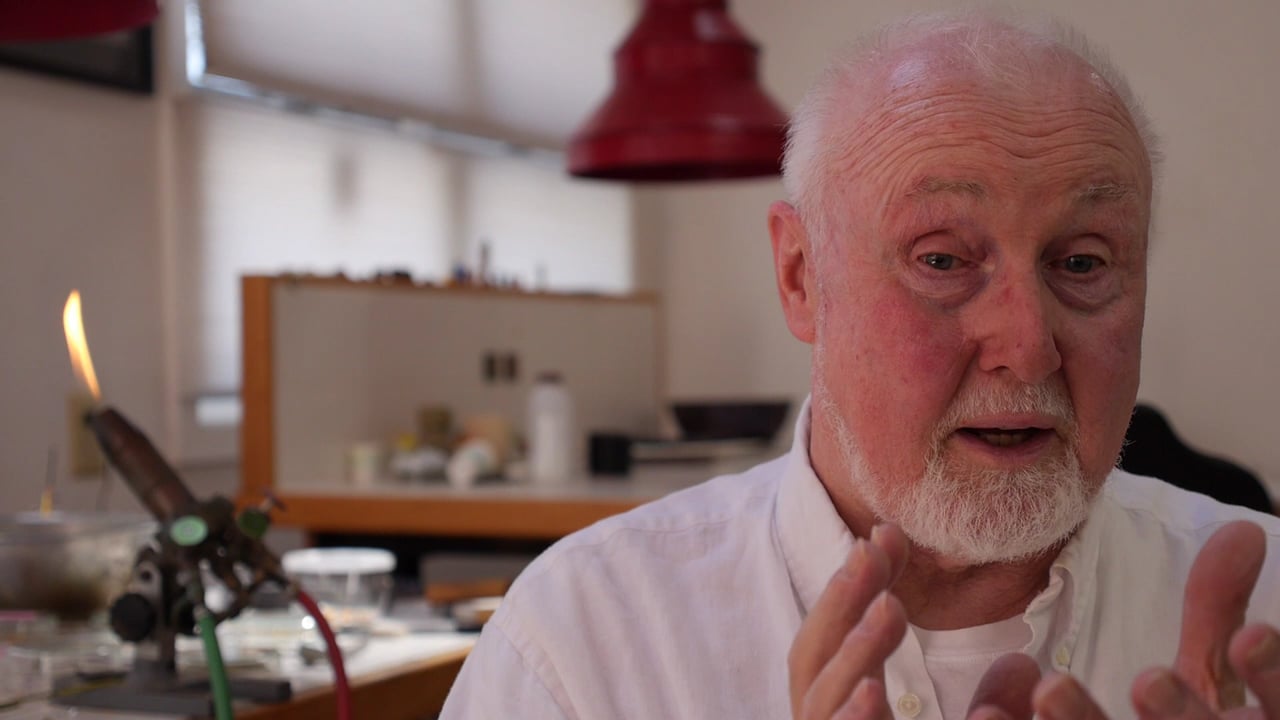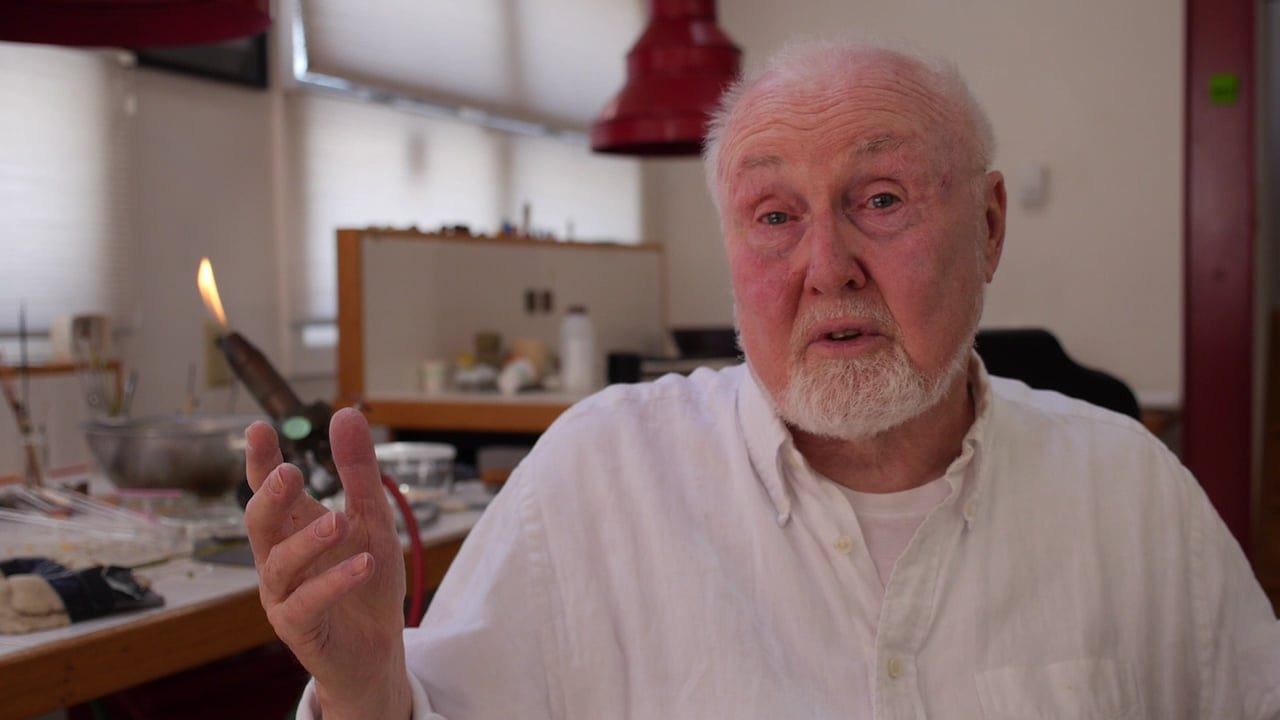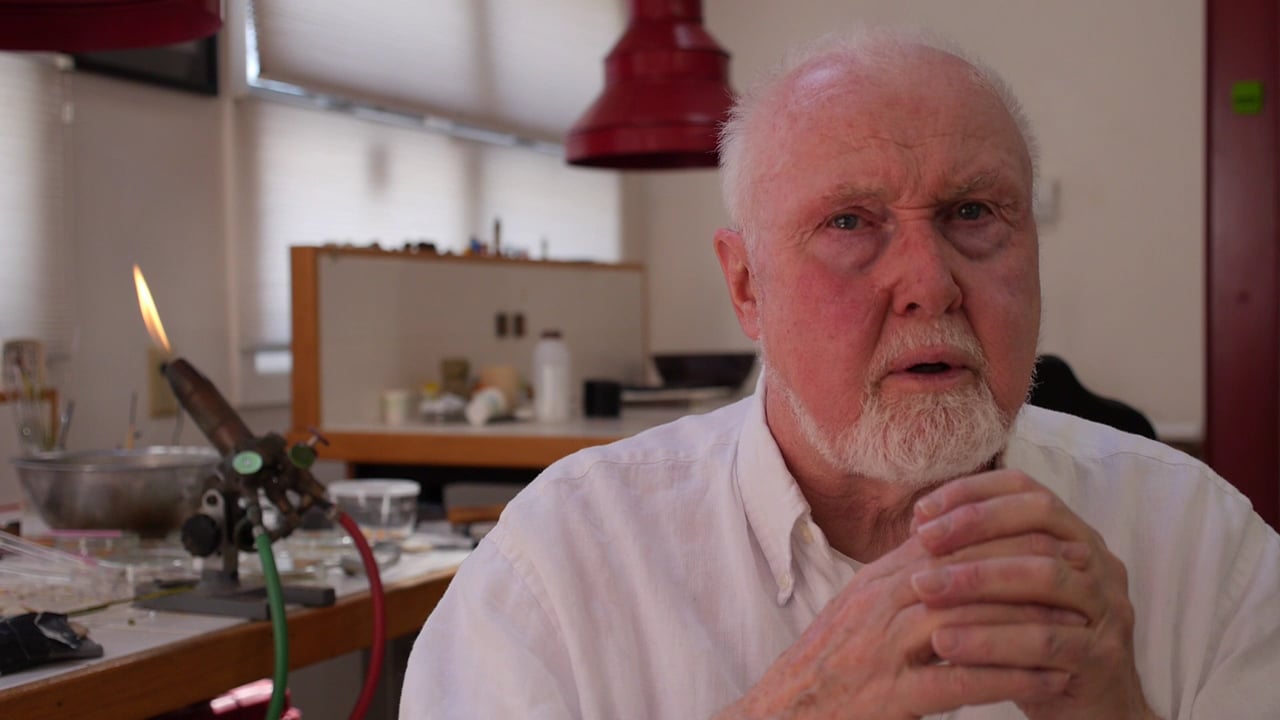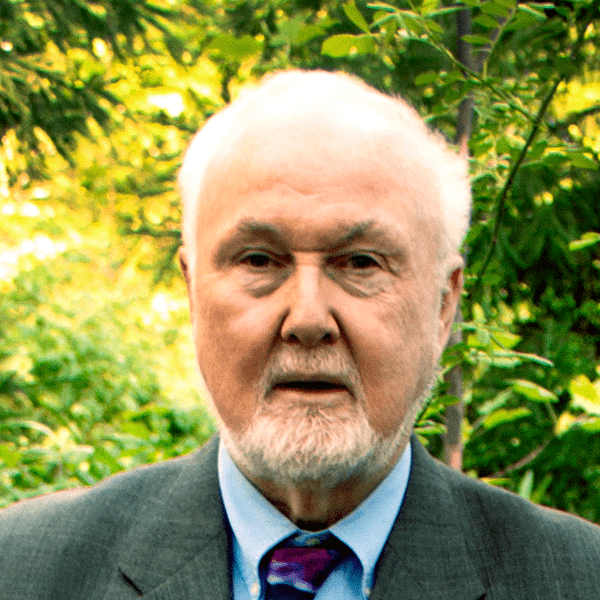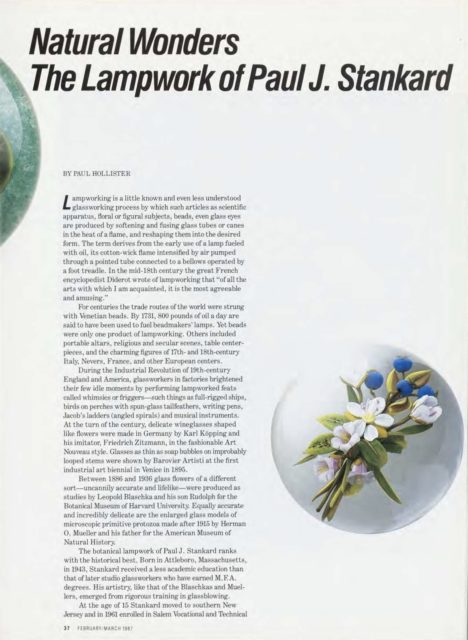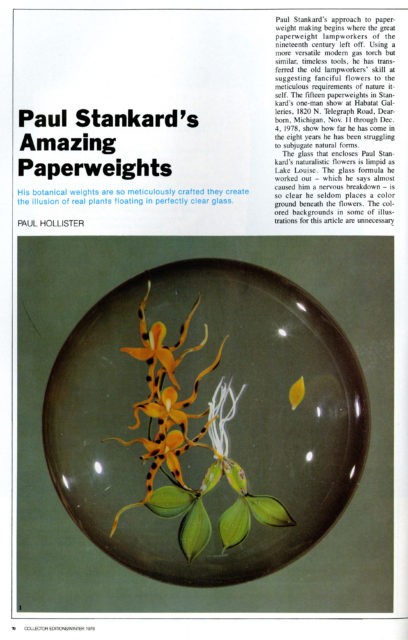In a recording by Paul Hollister of Paul Standard’s 1986 Flameworking Workshop, Stankard introduces Hollister, discusses Charles Kaziun and secrecy in paperweight making, and asks attendees what they wish to learn. Paul Hollister and Dwight Lanmon Lectures, May 17, 1986, with Paul Stankard Flameworking Workshop, June 1986. (Rakow title: Wheaton [sound recording] / Paul Hollister, BIB ID: 167926). Clip length: 07:14.
Time stamp: 00:00
Clip 1: Paul Stankard introduces Paul Hollister to participants of his workshop. Clip length: 02:27.
Paul Stankard: We’re gonna have one heck of a week, I mean if we can’t make this thing stimulating and relevant, we don’t have anything in here. Paul Hollister has painted. He’s a painter, studio artist, who spent his career painting. He became interested—I think, I may be wrong—but he became interested in paperweights as a child. It held his interest. He went on to write the definitive book on antique French paperweights. He’s a connoisseur with paperweights. I believe, of course he may disagree and the other artists may disagree, but I believe his familiarity with paperweight making and the paperweight techniques gave him a background and an understanding to appreciate contemporary glass, because he went from paperweight scholarship, to critiquing and writing about contemporary glass. So Paul Hollister is a resource, and I think just as important a resource as I am. So we’re happy to have you here, Paul. Gerrie [Geraldine] Casper, another resource, is curator of the Bergstrom-Mahler Museum. The Bergstrom-Mahler Museum is in Wisconsin, and they have the world’s—one of the world’s—probably the world’s finest collection of antique French paperweights. And I’m a paperweight maker, and I’m happy to say that somewhere along the line, I realized if you’re gonna do great work—good work—you have to know what “good” is. So Gerrie Casper’s here to talk about the antique French paperweight experience, to show us—to give us a slide lecture on lampwork flowers in the antique French paperweights. So that, for me, has been my reference point. What have they done in the past? And the English have this wonderful saying, the English feel that if you’re going to do a decorative art object that has been done in the past, the only justification for doing it is to do it better than they did it in the past. So—in order to do it better than how they did it in the past, you gotta know what they did. Gerrie, we’re happy to have you here.
Geraldine Casper: Thank you, great to be here.
Time stamp: 02:30
Clip 2: Paul Stankard talks about secrecy in paperweight making and Charles Kaziun. Clip length: 02:41.
Paul Hollister [PH]: Glassmaking, historically, has always been a very secretive process, and in most of Europe and in France and Murano and other places, the only people who were allowed to be told glass secrets were members of the same family. And these secrets were passed on through generations and generations, so that until recently, factories had the secrets for glassmaking and nobody else could find out about them, except those working in trial and error. And in 1962 this whole thing exploded and broke wide open. But it didn’t break wide open for the paperweight makers, and one of the great early American paperweight maker of the thirties and forties and fifties, Charles Kaziun, would not reveal anything; he said to me once, he said, ‘You’re a writer. I’ll take you downstairs and show you anything in my shop on one condition: That you never write about it.’ And I said, ‘I can’t promise you that because I’m a writer.’ So he never showed me. [audience laughs] And this particular thing has been secret up until this morning, up until we were at Wheaton last week, but this is going to be the real opening of the box of secrets.
PS: Well we’re going to open the box, but my big secret over the years was I had no secrets. I’ve told people all over the country a lot of things. But this is my first workshop, and, you know.
PH: Yeah, and you are very generous.
PS: Okay. [laughs] I’m coming out of the closet. [group laughs] Closet lampworker, coming out of the closet. Okay. What, alright, now I think what we’d begin with is maybe I’ll talk about the equipment. This is a Carlisle Torch [Carlisle School of Glass Art, Millville, New Jersey]. I live in South Jersey; living and working in South Jersey, I have the advantage of all of the industrial support for the glass industry. South Jersey is—their primary industry is glass, so there’s a lot of machine shops and small—well, companies that service the glass industry. This torch is the workhorse of my process, it’s a Carlisle CC burner.
Time stamp: 05:13
Clip 3: Paul Stankard asks attendees what they want to learn in his workshop. Clip length: 02:00.
Paul Stankard [PS]: Any ideas of what you’d like me to do? I know what I would like to do, but—do you have any ideas, any? Anyone want to talk about what they expect out of the studio and the workshop? Chris, what do you expect out of this workshop?
Chris Buzzini [CB]: Well, I expected to understand how you can take the same materials that a lot of us use and it’s just much better.
PS: Okay.
CB: This think it’s probably evolves, you know, from your desire, first of all, and your abilities, and your hard work, and I think—
PS: I hope that it’s because Paul Stankard is only—there’s only one Paul Stankard in the world. And that’s the reason why I was giving a workshop in a sense—if what I do is about fancy craft, then okay, that’s not that big of a deal. If what I’m able to do with the glass is because I have a particular interest in flowers and nature and I’m trying to communicate that interest, then, that makes it—that makes it special, for me. So, I want to go—I want to share all this technology, all these techniques, and I know that it has application in hot glass. I know that I can—I can take just about any piece of contemporary glass—I think of myself as a decorative artist, artist in a decorative arts tradition. So I decorate. That’s my thing. And I could take any piece of contemporary glass and decorate it. Can’t quite tell somebody how to decorate it for themselves. And I’ve told lots of people that have made [inaudible][group laughs] So—but I don’t know. Okay. Yaffa—I didn’t introduce Yaffa Sikorsky. She’s an artist from North Carolina whose work is—I’ve been admiring for years. I thought I had bought my first piece of glass from Yaffa in ’75, ’76?
Yaffa Sikorsky [YS]: Yeah.
PS: Do you want people to know that you’re a pro?
Permalink



